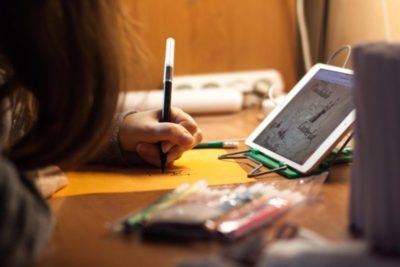
How to Use the Internet to Keep Kids Happy, Busy, and Learning This Winter
When kids are stuck inside over the winter, you know all too well how restless they can get. As a parent, you need to find ways to keep them busy, but you also want them to have fun, get some exercise and learn. How to do all that indoors? Go online and check out the millions of resources that are right at your fingertips. Here are just a few ideas for skills kids can learn online.
Learn New Art Skills
Kids often doodle when they’re bored, so why not spend some time doing online art lessons to really explore their creative abilities? With online drawing lessons, children can learn the basics of drawing using different materials. Once they have more experience, they can delve into more advanced drawing techniques like portraits and cartoons. Drawing is about more than creativity, although creativity in itself is an important part of learning that allows kids to appreciate the beauty and think outside the box. A drawing also sharpens children’s fine motor skills and builds neural connections.
Learn an Instrument
The internet is a great resource for kids to learn an instrument because they can take lessons at their own pace without ever having to leave home. Learning to play an instrument from home also gives you more choices so you don’t have to worry about finding an instructor in your area. The saxophone is an incredibly fun instrument for kids, but getting started with lessons and finding the right instrument can be confusing if you’re new to it. Start by looking at the types of saxophones and the differences in each one. The alto saxophone is the most common choice for beginners, but you may also want to consider the size and the style of music your child likes best when deciding whether a tenor, bass, or soprano sax would be a good option.
Learning an instrument is one of the best all-around educational activities for children, and the long, cold days of winter are ideal for taking the time to practice. After all, music instruction isn’t a one-time activity. It takes perseverance and commitment, so winter is a great time for kids to focus on this new skill with fewer distractions.
Learn to Dance
Kids may not go out to play as much over the winter, but they still need exercise. Not only is activity important for physical health, but they will also be happier and better behaved if they’re able to get some energy out. Childhood 101 features some of the best YouTube channels for brain breaks—those times when children need just a short break to get moving so they can refocus. These videos work for longer exercise sessions too and give kids an introduction to different types of movement that may spark a new interest. They may discover an interest in ballet, yoga, or hip-hop, which you can encourage so they can enjoy their new activity all winter long.
Learn STEM
The educational buzzword these days is STEM, which stands for science, technology, engineering, and math. That’s because today’s kids will be going into careers that involve innovation in these fields more than ever. One of the best ways for children to truly “see” and experience science is by conducting their own experiments. The internet is full of ideas for fun and easy science experiments you can do from home, like this Rainbow Magic Milk experiment from Earth Science Jr. The best thing about doing experiments is that the process of learning how they work leads to new questions, so children can keep exploring the science behind what they see. You can even make game time a way for kids to engage in STEM learning with science games from PBS Kids.
Between STEM, the arts, and physical fitness, the internet is a great resource for educational opportunities your kids will love. Use these ideas as a springboard for exploring the online world with them this winter. When they start to feel bored, encourage them to branch out from their current interests and try something new to keep learning fresh and fun.
Photo credit: Pexels


Recent Comments